Tower Garden Growing Guide
Discover how easy it is to nurture nutrient-dense greens, vegetables, and herbs at home with Tower Garden by Juice Plus. This step-by-step guide covers starting seedlings in rockwool, transferring to your vertical hydroponic garden, and maintaining the system for vibrant, healthy produce. Whether you’re a beginner or seasoned gardener, you’ll succeed with Tower Garden’s aeroponic system.

What is Rock Wool?
Rockwool is a lightweight, eco-friendly growing medium ideal for starting seedlings. Made from spun volcanic rock, it holds water and nutrients while allowing oxygen flow for rapid root development. This makes it perfect for vertical hydroponic gardening, helping you nurture nutrient-dense greens and vegetables at home.
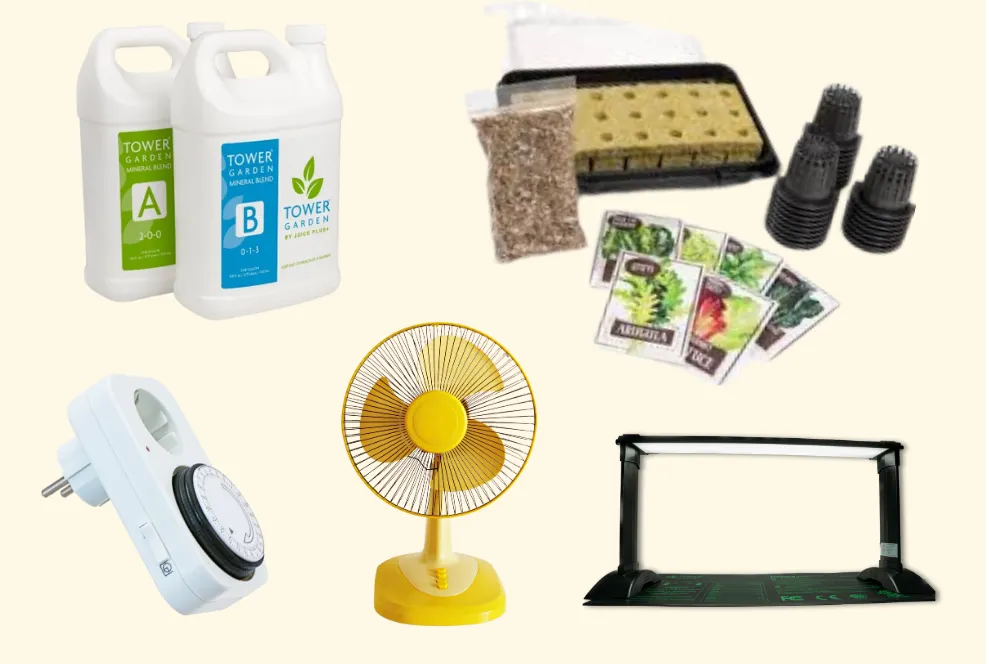
Seed Starting Supplies
Your Tower Garden includes a Seedling Starter Kit with rockwool cubes, vermiculite, tray, and seeds. For best results, add a grow light (for indoor or cold-weather starts); small fan (mimics outdoor conditions); outlet timer (automates light schedules);
heating mat (keeps seedlings warm); and Mineral Blend: (for nutrient-rich growth, included).
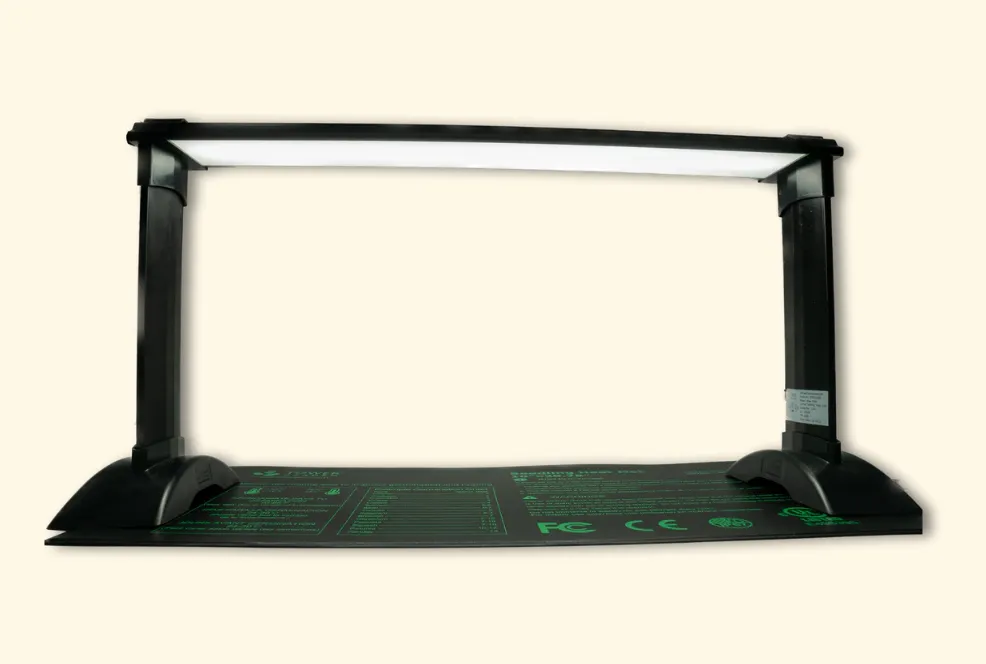
Best Grow Light for Seedlings
Use full-spectrum LED or fluorescent lights. We recommend the Germinator by Tower Garden—a tabletop LED with heating pad for starting nutrient-dense greens and herbs indoors.
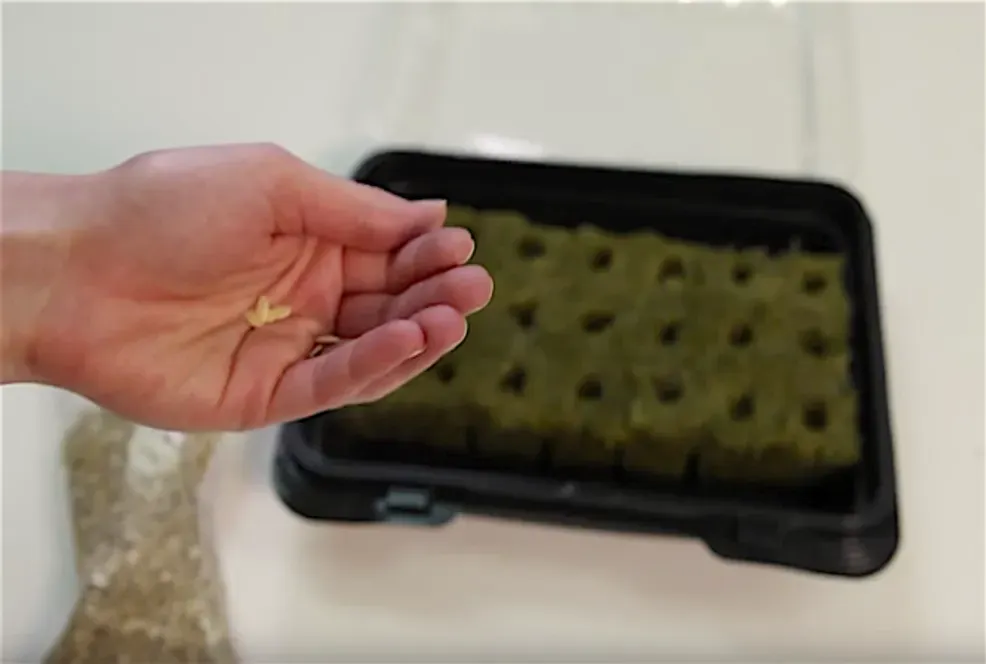
Starting Seeds in Rockwool
Soak cubes in water for 30 minutes. Place seeds in pre-cut holes (6–12 for small like lettuce/herbs; 1–2 for larger like tomatoes/zucchini). Fill halfway with vermiculite for small seeds, fully for larger. Place in tray and label. Add ¼ inch water each morning.
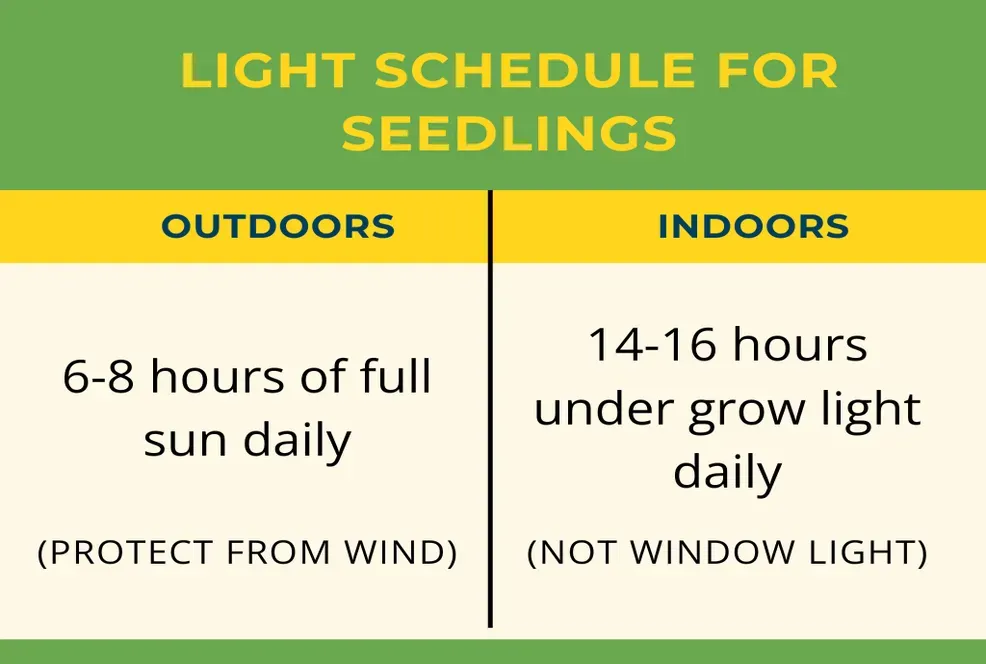
Light Schedule for Seedlings
Once sprouts appear, remove heating mat and provide ample light. Outdoors: Full sun 6–8 hours, sheltered from wind. Indoors: Grow light 2–4 inches above for 14–16 hours (use timer). Keep cubes moist.
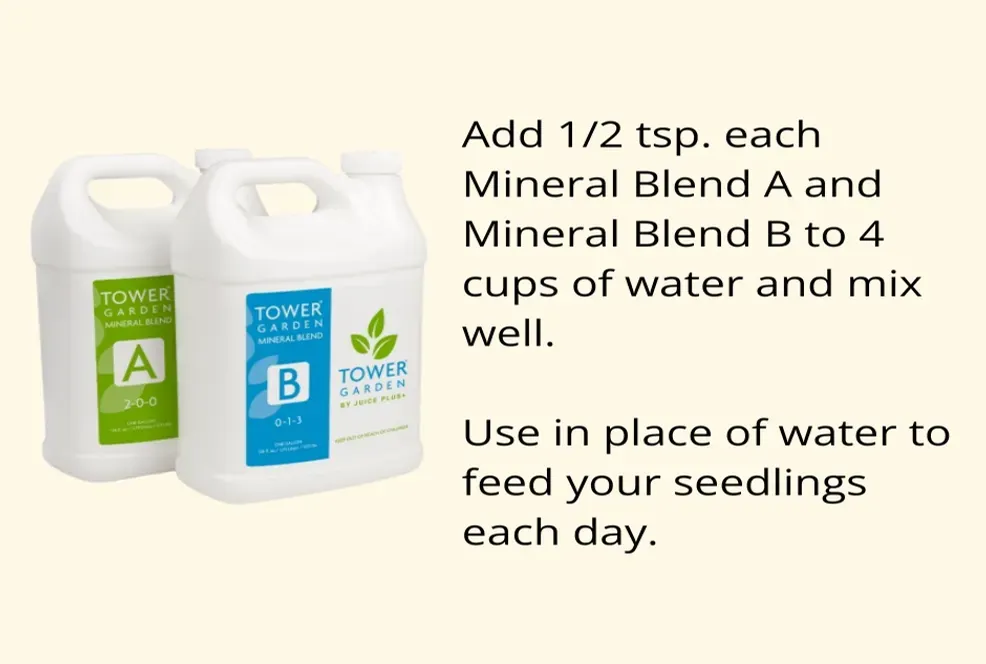
When to Fertilize Seedlings
After 2–3 weeks (true leaves, 1–2 inches tall), mix diluted Mineral Blend A and B (follow image ratios). Add ¼ cup to tray each morning instead of water until transplant.
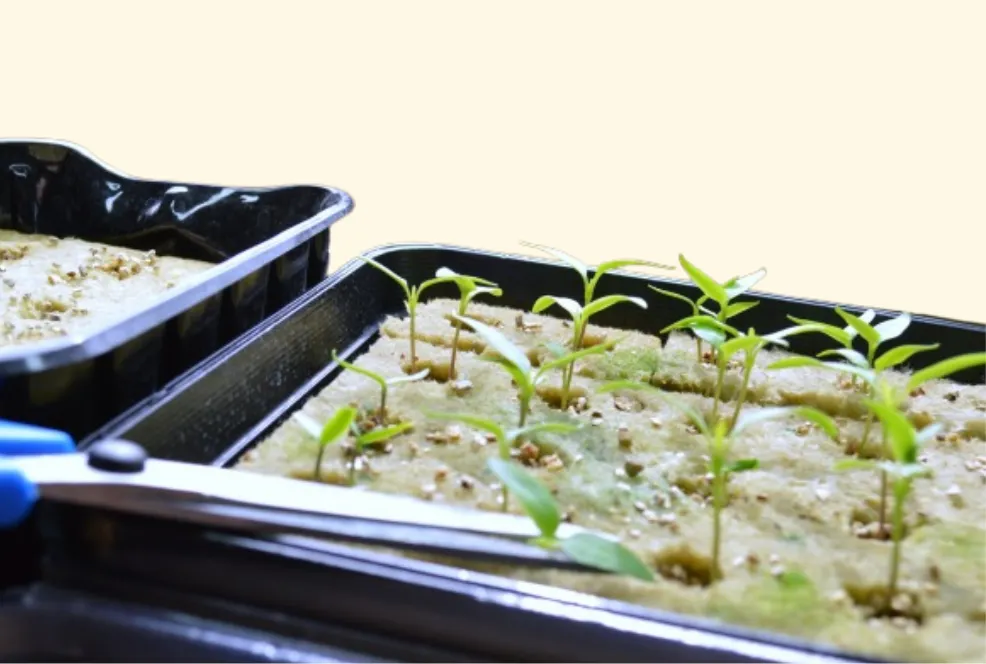
How to Thin Seedlings
Thin to reduce competition: Leafy greens/herbs can stay multiple per cube. Larger plants: Cut weaker seedlings at base with shears, leaving the strongest. Improves air and nutrients.
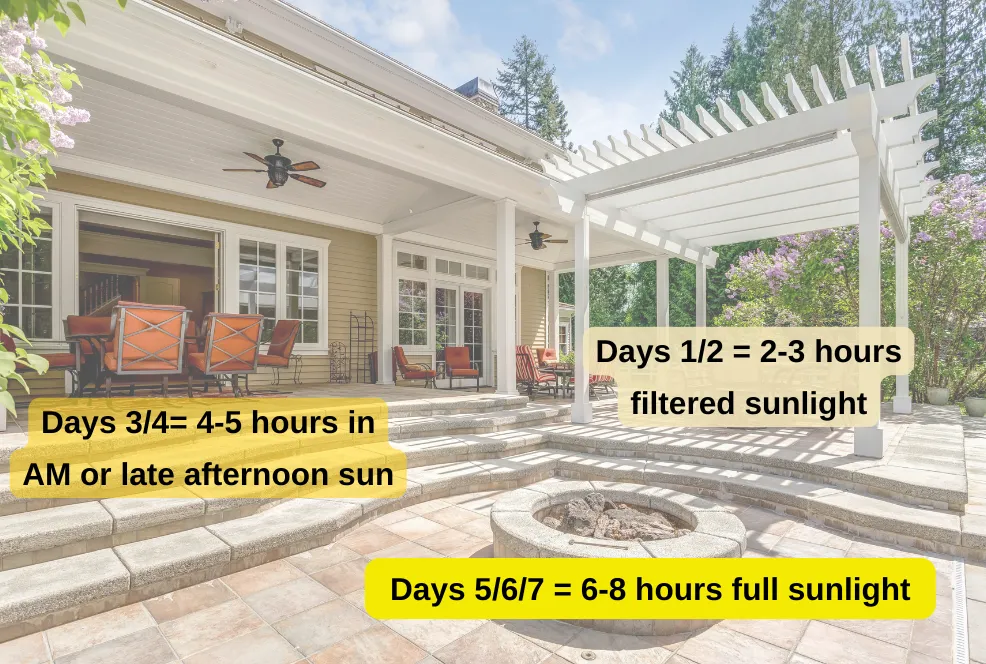
Harden Off Seedlings
For outdoor transfer, acclimate over 7 days: Days 1–2: Filtered sun 2–3 hours. Days 3–4: 4–5 hours morning/afternoon. Days 5–7: Full sun 6–8 hours.
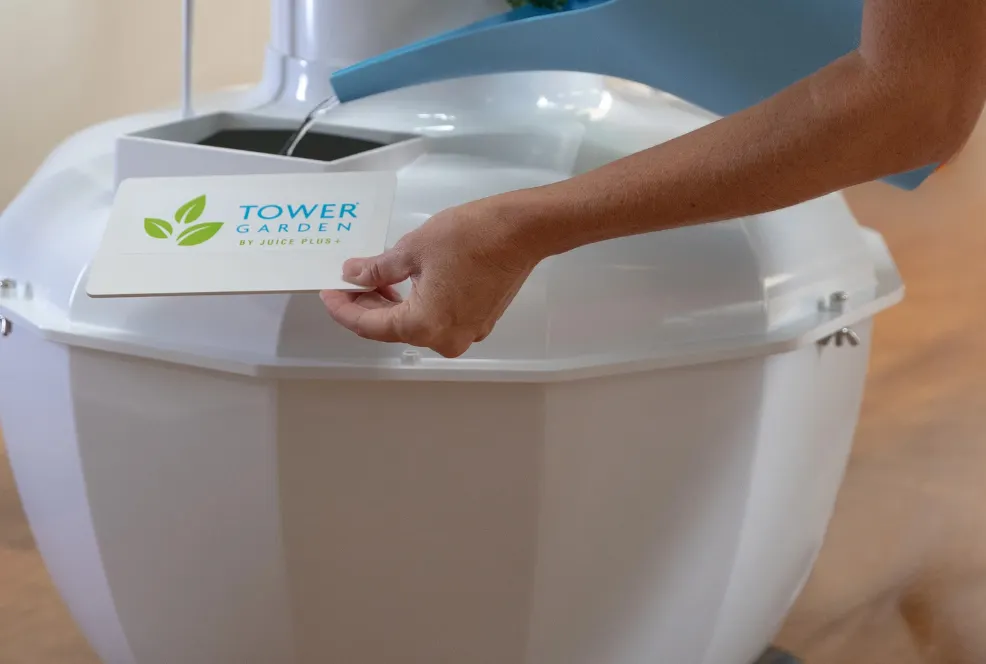
Set Up Your Tower Garden
Place in level spot (indoors/outdoors). Fill reservoir with water + 50% Mineral Blend A/B for first month. Test pH (5.5–6.5), adjust with pH+ or pH–. Plug in pump/lights.
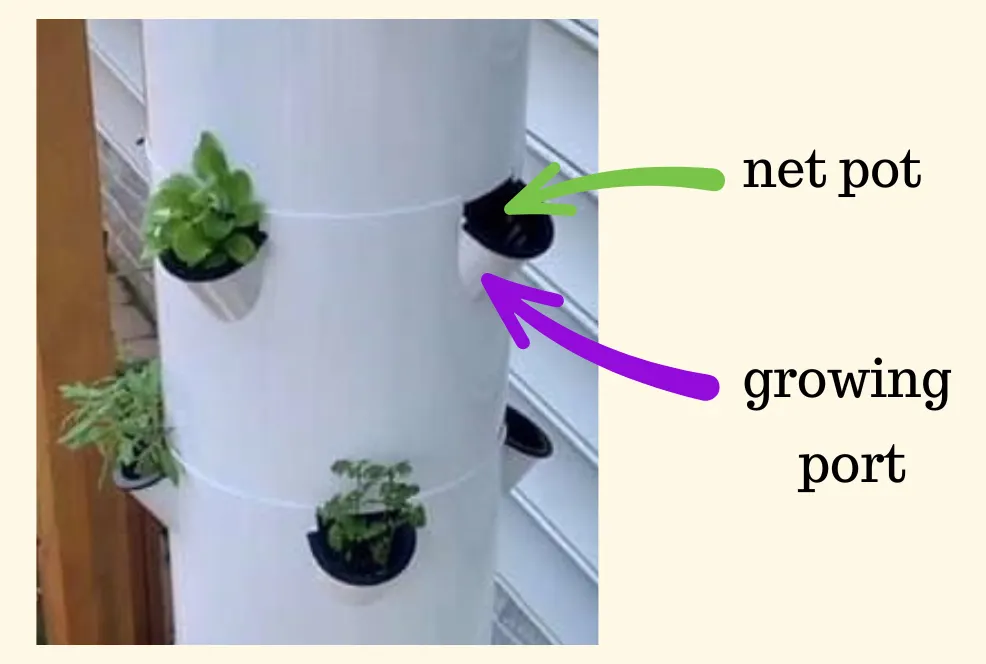
Transfer Seedlings to Your Tower Garden
At 3 inches tall (roots protruding from base of rockwool), insert one per port (cube touching net pot bottom). For indoors, position lights 2–4 inches above; timer for 14–16 hours.
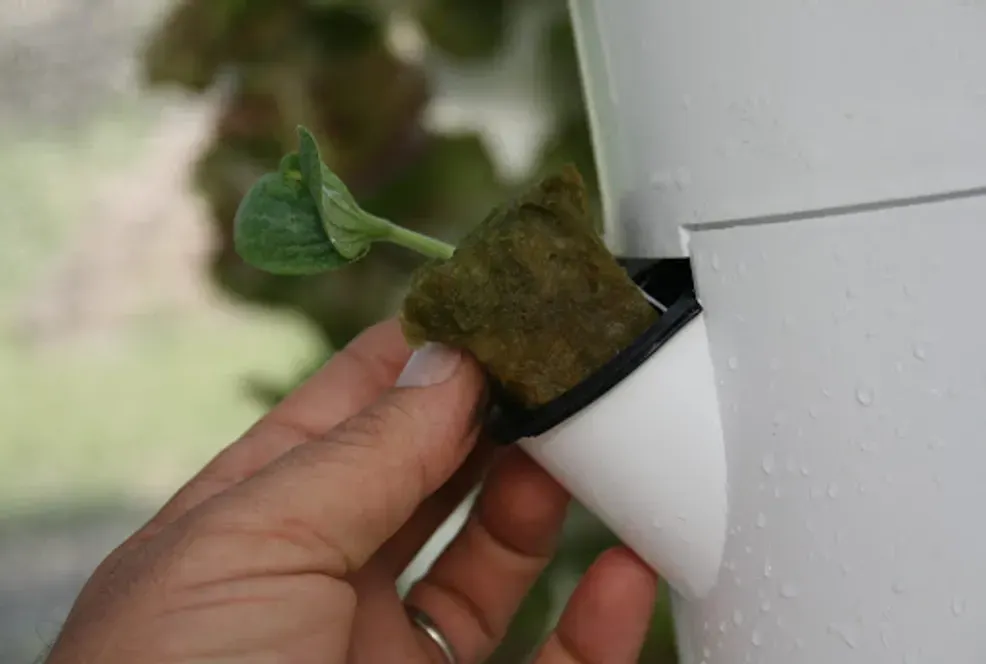
Maintain Your Tower Garden for Healthy Plants
Monitor moisture: Keep reservoir filled (pump submerged). Add 20 ml Mineral Blend A/B per gallon on refills. Check pH weekly, adjust to 5.5–6.5. Inspect for pests/deficiencies.
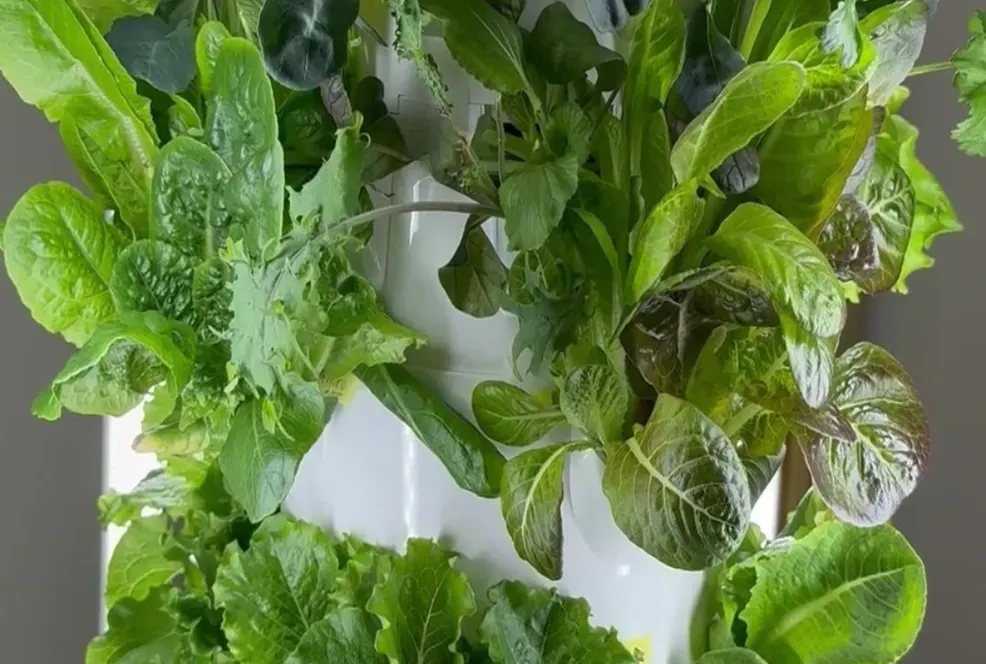
Harvesting Your Plants
Harvest at peak: Leafy greens/herbs: Snip as needed at 6–8 inches. Vegetables/fruits: Pick ripe (tomatoes colored, zucchini 6–8 inches). Use clean scissors.
Discover Tower Garden Seed Packs for Every Grower
Expand with ten seed packs from the Tower Garden website. Indoor: Spinach, jalapeños, mini cucumbers, micro tom tomatoes, sorrel, Japanese onions. Salsa: Cilantro, Anaheim/jalapeño peppers, Cherokee purple tomatoes, Japanese onions. Growing Guru: Anaheim peppers, sugar baby watermelon, Cherokee purple tomatoes, eggplant, patty pan squash, red sweet peppers, pink radicchio. Picture Perfect: Butterhead/gourmet lettuce, chives, cilantro, dill, sorrel, basil. Warm Weather Flowers: Starflower, chamomile, marigolds, nasturtiums, dwarf sunflowers, zinnias. Cold Weather Flowers: Calendula, Johnny jump-up/King Henry violas, snapdragons, cauliflower. Juicing: Spinach, celery, parsley, quick snack cucumbers, baby kale, rainbow chard. Wellness: Calendula, chamomile, holy basil, lemon balm, lavender, hyssop officinalis. Aromatic: Dill, oregano, parsley, sage, rosemary. Culinary: Basil, chives, cilantro, lavender, winter thyme.
Start Your Tower Garden Journey Today
Ready to nurture nutrient-dense greens, vegetables, and herbs at home? Tower Garden by Juice Plus makes vertical hydroponic gardening simple, sustainable, and rewarding. Transform your health with fresh, flavorful produce today!
Affiliate disclosure applies to purchases made through this link.
